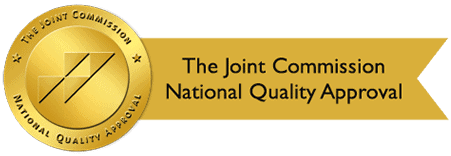By: Design for Change Recovery
Categories:
The Newest Drug Threats You Need to Know About — And How to Protect Yourself or a Loved One
You are here:The landscape of substance abuse in America is changing at a dangerous pace. New synthetic drugs, deadly combinations, and unexpected sources of addiction are emerging faster than many people realize — often more potent and harder to treat than ever before.
At Design for Change Recovery, we believe that awareness is the first line of defense. By understanding the threats we face today, individuals, families, and communities can take action sooner, get the right help, and save lives.
In this article, we’ll explore four urgent trends dominating the headlines and emergency rooms right now:
-
Nitazenes — the opioid that can be up to 43 times stronger than fentanyl.
-
Speedballing — a deadly combination of stimulants and opioids.
-
Nitrous oxide (“whippets”) misuse — a legal product causing permanent harm.
-
Cannabis dispensaries and opioid deaths — exploring the research on harm reduction.
1. Nitazenes: The Opioid You Haven’t Heard of — But Should Fear
What are Nitazenes?
Nitazenes are a class of synthetic opioids originally developed in the 1950s but never approved for medical use. They’ve recently resurfaced on the illicit drug market, often mixed into heroin, counterfeit pills, or fentanyl — and frequently without the user’s knowledge.
Why they’re so dangerous:
-
Extreme potency — Some nitazenes are up to 43 times more powerful than fentanyl, which itself is 50–100 times more potent than morphine.
-
Narcan resistance — While naloxone (Narcan) can reverse many opioid overdoses, it may be less effective against nitazenes, requiring multiple doses or additional interventions.
-
Undetectable in standard tests — Most toxicology screens don’t detect nitazenes, making diagnosis and timely treatment more challenging.
The reality:
In recent months, emergency departments have reported young, otherwise healthy individuals dying within minutes of exposure. The speed and severity of these overdoses leave little time for intervention.
What you can do:
-
Never take pills or powders from unverified sources.
-
If you suspect an overdose, call 911 immediately and administer Narcan anyway — multiple doses may be necessary.
-
Push for expanded drug testing in your community that includes nitazenes.
2. Speedballing: The Comeback of a Deadly Combination
What is speedballing?
Speedballing is the practice of mixing a stimulant (such as cocaine or methamphetamine) with an opioid (such as heroin or fentanyl). It’s not new — but the potency of today’s drugs has made it vastly more dangerous.
Why it’s deadly:
-
Opposing effects trick the body — stimulants mask the sedative effects of opioids, causing users to take more than they realize.
-
Increased strain on the heart and lungs — this mix creates severe cardiovascular stress while still depressing breathing.
-
High overdose rate — overdose deaths involving this combination have increased nearly 50-fold since 2010.
The numbers are staggering:
-
Around 35,000 deaths annually are now linked to opioid–stimulant combinations.
-
Many cases involve fentanyl-contaminated stimulants, meaning users never intended to take an opioid at all.
Why it’s growing:
Some users chase the “up and down” high. Others are entirely unaware they’re speedballing, especially when street drugs are laced. This underscores the importance of drug testing strips and education.
3. Nitrous Oxide Misuse: The “Innocent” High That Can Steal Your Health
What is nitrous oxide?
Commonly known as “laughing gas,” nitrous oxide has legitimate medical uses in dentistry and is also sold legally in small canisters for whipping cream. In recent years, abuse of these canisters — often called whippets — has skyrocketed among teens and young adults.
Why it’s dangerous:
-
Neurological damage — Chronic or heavy use depletes vitamin B12, which can lead to permanent nerve damage, paralysis, and incontinence.
-
Rapid accessibility — It’s legal, inexpensive, and easy to order online or buy in stores.
-
False sense of safety — Many believe it’s harmless because it’s used in kitchens or dental offices.
The growing trend:
Social media videos glamorizing whippet use have fueled popularity. New “flavored” nitrous oxide canisters — marketed with fruity scents — are especially appealing to young people.
Signs of abuse:
-
Numbness or tingling in extremities.
-
Difficulty walking or loss of coordination.
-
Unexplained weakness or fatigue.
Parents, educators, and healthcare providers should be alert — early intervention is critical to prevent irreversible harm.
4. Cannabis Dispensaries and Opioid Death Rates: A Complex Picture
The research:
Recent studies suggest that U.S. counties opening legal cannabis dispensaries have seen up to a 30 % reduction in opioid-related death rates over the following decade. Researchers theorize that some individuals may substitute cannabis for more dangerous opioids in pain management or recreational use.
Important caveats:
-
Cannabis is not without risks — it can still lead to dependence and mental health complications in some users.
-
These findings don’t mean cannabis is a cure for the opioid crisis — only that availability might change community usage patterns in ways that reduce fatalities.
Why this matters for recovery programs:
Exploring harm-reduction approaches — alongside prevention, education, and treatment — may help save lives. However, any harm-reduction strategy should be paired with clear education about all substance risks.
The Common Thread: Unseen Risk
What makes these four topics so urgent is their hidden danger:
-
Nitazenes and fentanyl-laced drugs can kill with microgram doses.
-
Speedballing often happens unknowingly.
-
Nitrous oxide looks legal and harmless but can cause devastating health problems.
-
Even harm-reduction discussions around cannabis require nuance and safeguards.
In many cases, people don’t know what they’re taking — or how quickly things can turn fatal. That’s why education, open conversations, and accessible treatment matter now more than ever.
How Design for Change Recovery Can Help
At Design for Change Recovery, we’ve seen the toll these substances take on individuals, families, and communities. Our approach is:
-
Client-centered — tailoring each treatment plan to the individual’s needs and goals.
-
Evidence-based — using proven therapies like CBT, DBT, and trauma-informed care.
-
Comprehensive — addressing not only the substance use but also underlying mental health, family dynamics, and life skills.
Whether you’re facing addiction yourself or worried about someone you love, there is hope — and it starts with reaching out.
Steps You Can Take Today
-
Educate yourself and others about emerging drug threats.
-
Carry Narcan if you or someone you know is at risk of opioid exposure.
-
Have open conversations with your kids and loved ones about drug use and safety.
-
Seek professional help early — the sooner treatment begins, the better the outcome.
Frequently Asked Questions (FAQ)
1. What are nitazenes and why are they so dangerous?
Nitazenes are synthetic opioids that can be up to 43 times stronger than fentanyl. They are often mixed into other drugs without the user’s knowledge and may be less responsive to Narcan, making overdoses harder to reverse.
2. Can Narcan still work on nitazene overdoses?
Narcan can sometimes work, but multiple doses may be needed. Emergency help should be called immediately, and Narcan should still be administered while waiting for professionals.
3. What is speedballing?
Speedballing is the dangerous practice of mixing a stimulant (like cocaine or meth) with an opioid (like heroin or fentanyl). It greatly increases the risk of fatal overdose and heart failure.
4. Why is nitrous oxide misuse dangerous?
Recreational use of nitrous oxide, also called “whippets,” can cause permanent nerve damage, paralysis, and incontinence due to vitamin B12 depletion. It’s especially risky because it’s legal and easily accessible.
5. Do cannabis dispensaries really lower opioid death rates?
Some studies show counties with legal cannabis dispensaries have up to a 30% lower opioid-related death rate over time. While this may suggest a harm-reduction effect, cannabis still carries risks and is not a cure for addiction.
6. How can I protect myself or a loved one from these drug dangers?
Educate yourself, talk openly about drug risks, carry Narcan if opioids may be present, and seek professional help at the first signs of a problem.


